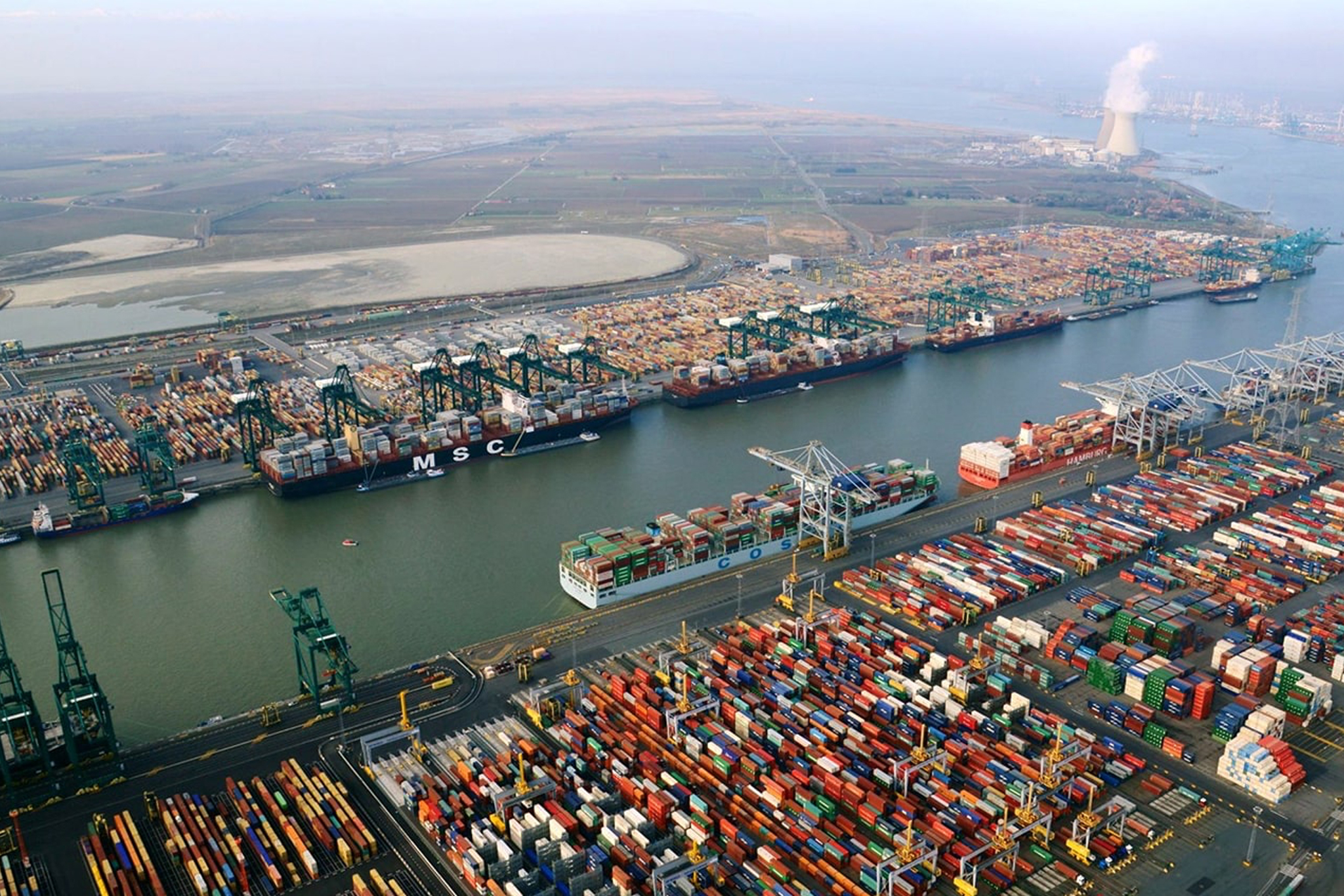8 players from the chemical & energy sectors investigate feasibility of CO2 infrastructure
The Port of Antwerp is taking another important step in the transition to a sustainable, low-carbon port. Eight leading players in the port area – Air Liquide, BASF, Borealis, INEOS, ExxonMobil, Fluxys, Port of Antwerp, and Total – have signed a collaboration agreement as the first step towards the possible development of a CO2 infrastructure. The consortium of companies will conduct a joint study that investigates the technical and economic feasibility of CO2 infrastructure in support of Carbon Capture, Utilization & Storage (CCUS). CCUS applications can make an important contribution towards achieving the climate goals.
More impact through collaboration
Climate change, and the role played by CO2 emissions, demands more innovative solutions. As the location of the largest integrated energy & chemicals cluster in Europe, the Port of Antwerp is the ideal location for creating new cross-company collaborations and taking innovative steps towards CO2 reduction. That’s why 8 leading players in the port area have joined forces: Air Liquide, BASF, Borealis, INEOS, ExxonMobil, Fluxys, Port of Antwerp, and Total have signed a collaboration agreement to investigate the feasibility of a CO2 infrastructure for Carbon Capture, Utilisation & Storage (CCUS) applications in the port. The CO2 infrastructure would be of the ‘open access’ type, available for use by the entire industrial port community.
The capture and storage of CO2 – Carbon Capture & Storage (CCS) – and the use of CO2 as a raw material for various industrial applications – Carbon Capture & Utilisation (CCU) – are seen as important avenues in the transition to a low-carbon port. The partners in the project believe that both applications can have a significant impact in the longer term and can make a useful contribution to achieving the Flemish, Belgian and European energy and climate objectives. If technically and economically feasible, the development of this infrastructure can lead to a reduction in CO2 emissions in the run-up to 2030.
Feasibility study and financing
In the first phase, the partners will carry out detailed studies of the technical and economic feasibility of CO2 facilities in support of CCUS. This analysis is expected to take about one year to complete. In addition, broad financial support from Flanders, the Belgian federal government and the EU is essential for further successful realisation of the project. Therefore, an important part of this is the preparation of subsidy applications.
International collaboration
Among other things, the feasibility study will investigate the possibilities for CO2 storage. Belgium does not have a suitable subsoil for storing CO2 underground, and so international collaboration will be necessary. To support this international collaboration, the Port of Antwerp and a number of other partners submitted 2 applications for projects to the European Commission earlier this year for recognition as ‘Projects of Common Interest’. Both projects offer possibilities for investigating the development of cross-border CO2 transport infrastructure, towards Rotterdam (CO2TransPorts project) and Norway (Northern Lights project), respectively. A decision on these applications is expected by the end of this year. In the context of the feasibility study, the results of these applications will be taken into account and contacts with other CO2 storage initiatives will be sought so that robust concepts can be developed for the CO2-intensive companies in the region.
Jacques Vandermeiren, Port of Antwerp CEO: “In addition to making use of sustainable energy sources and raising the energy efficiency of production companies, CCUS can make an important contribution in the transition to a sustainable, low-carbon, circular economy in the port. In our role as community builder, we aim to make a practical contribution towards this. If such common infrastructure can be realised, it will benefit the entire industrial port community.”

